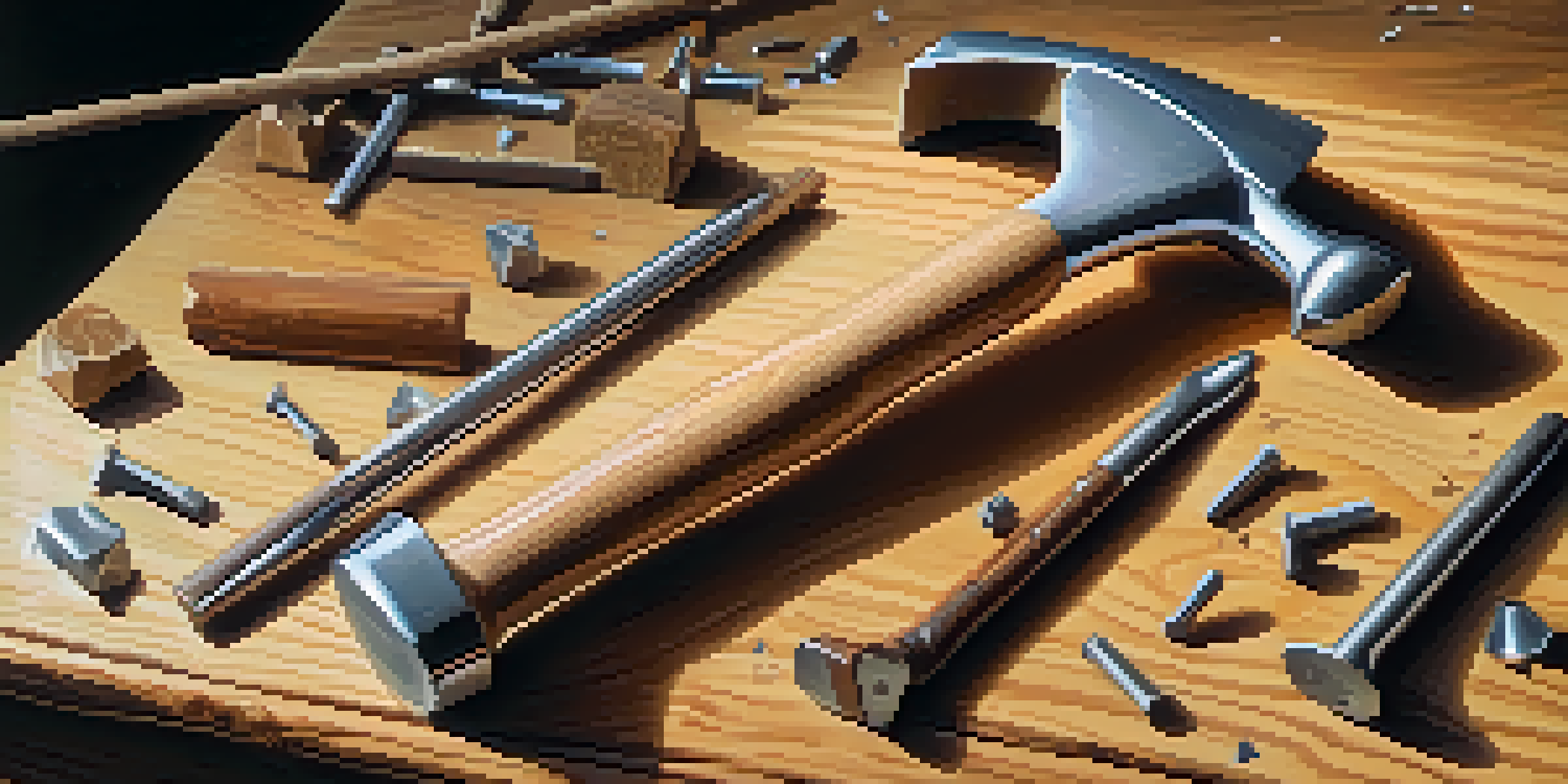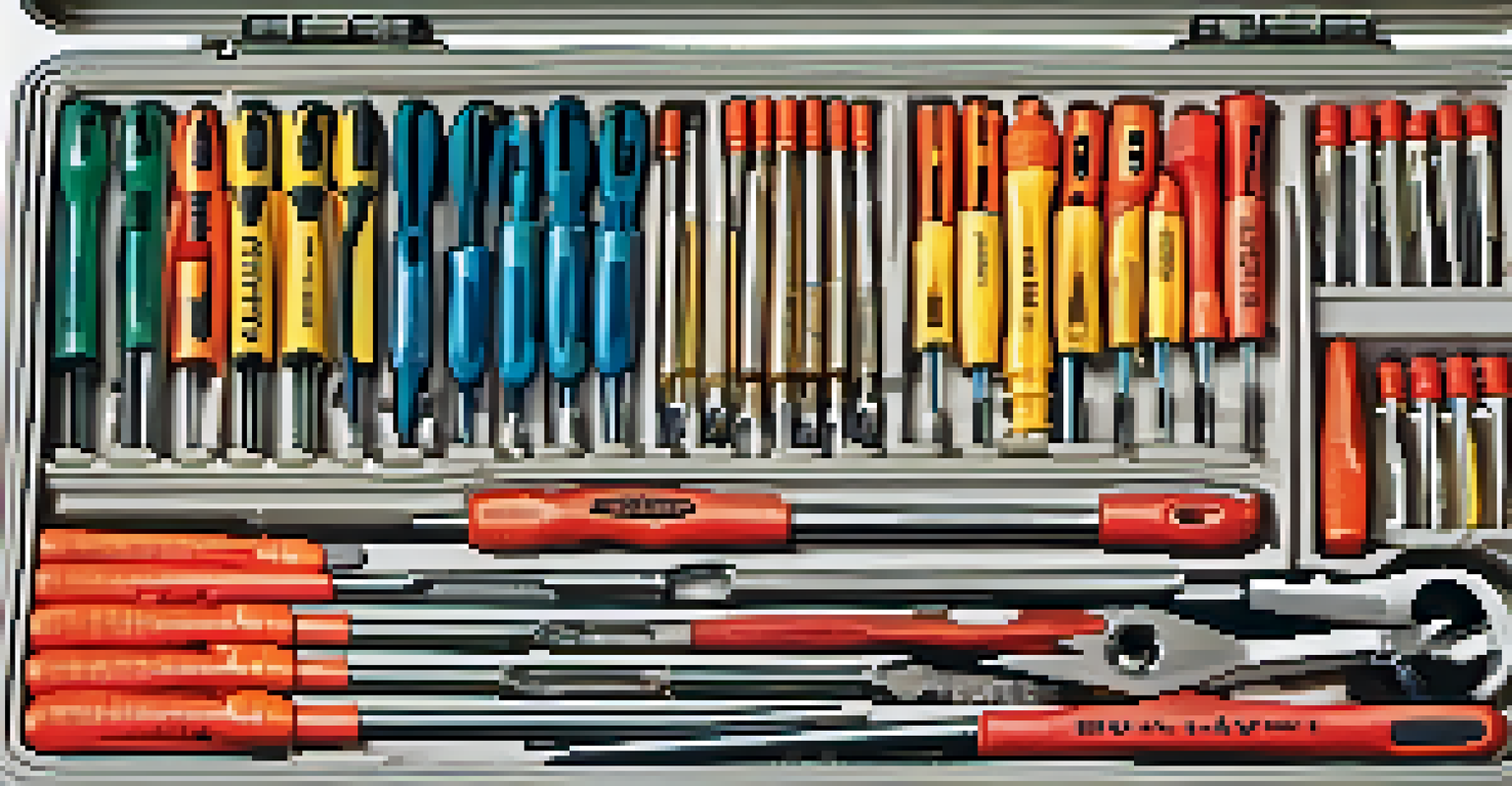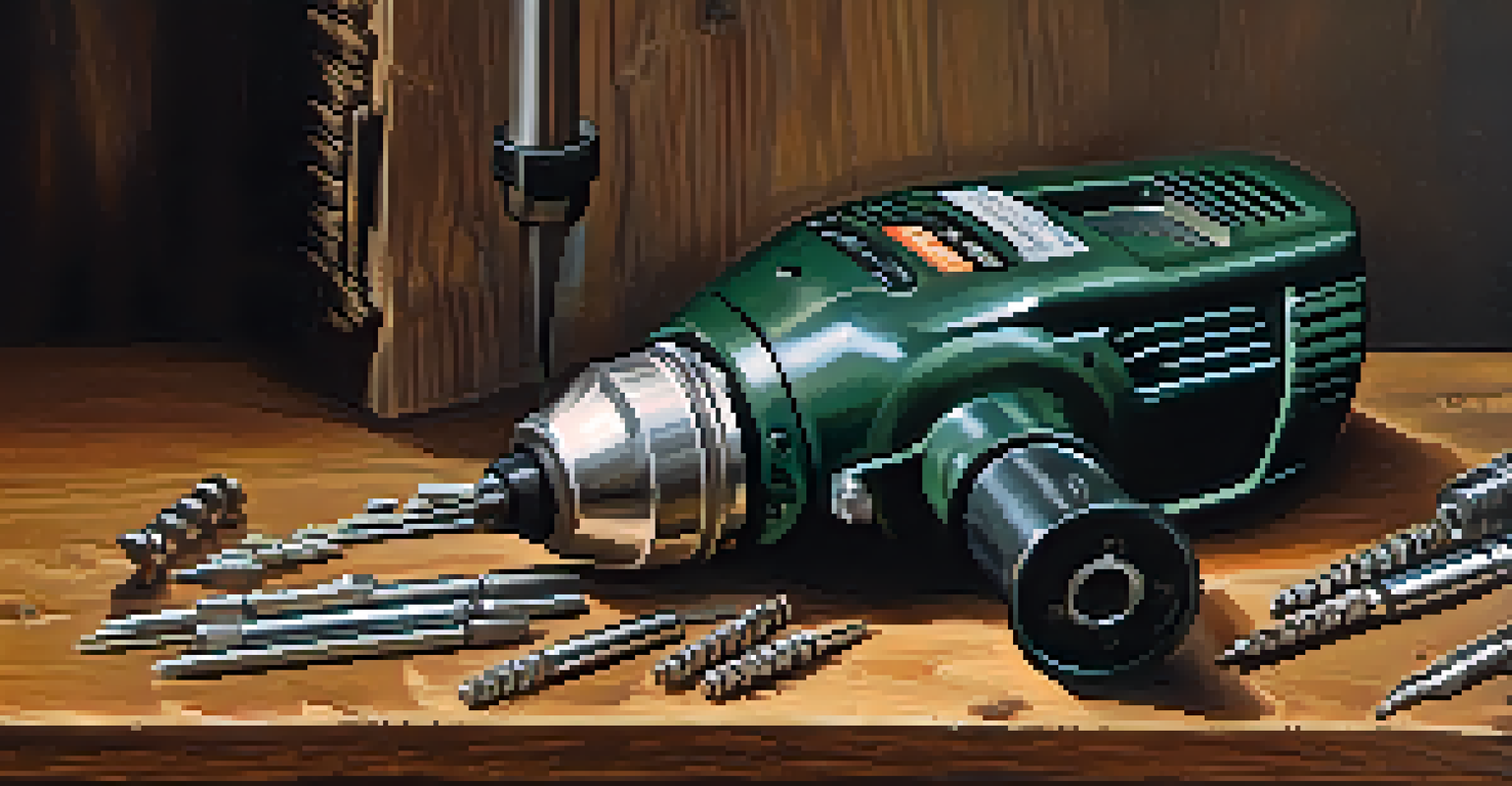DIY Home Improvement: Must-Have Tools You Can’t Ignore

The Versatile Hammer: Your Go-To Tool for Many Tasks
A hammer is one of the most fundamental tools in any DIY toolkit. Whether you're hanging a picture frame or assembling furniture, a reliable hammer can help you get the job done efficiently. Look for a claw hammer, as it not only drives nails but also pulls them out when needed.
The only thing worse than training your employees and having them leave is not training them and having them stay.
When choosing a hammer, consider the weight and grip that feels comfortable for you. A lighter hammer is easier to handle for intricate tasks, while a heavier one can drive nails more effectively in tougher materials. It's all about finding the right balance for your specific projects.
Don't underestimate the power of a good hammer; it's not just about brute force. Using the right technique, like a firm grip and controlled swings, can lead to cleaner results, and in turn, a more polished final product.
The All-Purpose Screwdriver: Essential for Every Home
Screwdrivers are indispensable for any home improvement task. From assembling furniture to tightening loose cabinet doors, having a reliable screwdriver can save you time and frustration. A set that includes both flathead and Phillips screwdrivers will cover most of your needs.

Consider investing in a multi-bit screwdriver or a drill with screwdriver attachments. This way, you’ll have the flexibility to tackle different types of screws without needing to switch tools constantly. It’s also a great space-saver in your toolbox.
Essential Tools for DIY Success
Having the right tools, like hammers and screwdrivers, is crucial for efficiently completing various home improvement tasks.
Remember to choose screwdrivers with comfortable grips and sturdy construction. The right screwdriver can make even the most tedious tasks feel manageable, allowing you to focus on bringing your DIY visions to life.
Measuring Tape: Precision is Key in Home Projects
Accurate measurements can make or break your DIY project, which is why a measuring tape is a must-have tool. Whether you're installing shelves or laying flooring, a measuring tape helps ensure everything fits perfectly. Opt for a sturdy, retractable measuring tape for ease of use.
Safety isn't just a slogan, it's a way of life.
When using a measuring tape, remember to measure twice and cut once. This age-old adage emphasizes the importance of accuracy in DIY work, helping you avoid costly mistakes. A good measuring tape usually features both metric and imperial units for versatility.
Some measuring tapes even include handy features like a magnetic end to secure it against metal surfaces. This little addition can make a big difference, especially when you're working alone and need an extra hand.
The Power Drill: A Game-Changer for Every DIYer
A power drill is an essential tool that can significantly speed up your home improvement projects. From drilling holes to driving screws, a power drill can handle a variety of tasks with ease. Cordless models are particularly convenient, allowing for mobility without being tethered to an outlet.
When selecting a power drill, look for one with adjustable speed settings. This feature can provide you with better control, whether you’re drilling into wood or metal. A drill with multiple bits will also expand your range of capabilities.
Accuracy Matters in Projects
Using tools such as measuring tapes and levels ensures precise measurements and alignment, leading to polished and professional results.
Investing in a quality power drill can save you time and improve the efficiency of your projects. With the right drill in hand, you'll find that many tasks become less daunting, opening the door to more ambitious DIY endeavors.
Pliers: Your Handy Companion for Gripping and Twisting
Pliers are one of those tools that you may not think about until you need them. Their ability to grip, twist, and cut makes them invaluable for various tasks around the house. A good set should include needle-nose pliers for intricate work and standard pliers for general use.
When using pliers, remember that they can help you apply force without damaging the objects you’re working with. Whether you're bending wires or tightening bolts, the right pliers can provide the leverage needed to accomplish the task with ease.
Having a set of pliers readily available can save you a lot of hassle. They often become the go-to tool for unexpected situations, making them a staple in any DIY toolkit.
Level: Ensuring Everything is Straight and Even
A level is a simple yet crucial tool that ensures your projects are perfectly aligned. Whether you're hanging shelves or installing tiles, a level helps you achieve that professional look by preventing crooked installations. There are various types, but a standard spirit level is a great place to start.
Using a level is straightforward: just place it on the surface you’re measuring, and watch the bubble. When it’s centered, you know you’re good to go! This small step can save you from headaches later on when you notice things aren’t as aligned as they should be.
Safety Gear is a Must-Have
Investing in quality safety gear protects you from potential hazards, making your DIY experience safer and more enjoyable.
Investing in a good level can elevate the quality of your DIY projects. It’s a simple tool that pays dividends by ensuring your hard work pays off in a polished finish.
Utility Knife: The Unsung Hero of DIY Projects
A utility knife is one of those tools that often gets overlooked, but it can be incredibly useful for various tasks. From opening boxes to trimming excess materials, a sharp utility knife can make your life easier. Look for one with a retractable blade for safety and convenience.
When using a utility knife, always prioritize safety. Make sure to cut away from your body and use a stable surface to avoid accidents. A fresh blade will give you cleaner cuts, making your projects look more professional.

In the world of DIY, a utility knife is like a trusty sidekick. It may not always be front and center, but when you need it, you’ll be glad it’s there, helping you tackle everything from crafting to home repairs.
Safety Gear: Protecting Yourself is Always Priority
While tools are essential for DIY projects, safety gear is equally important. Investing in quality safety goggles, gloves, and a mask can protect you from potential hazards. Remember, it's better to be over-prepared than to risk injury while working on your project.
When selecting safety gear, choose items that fit well and are comfortable to wear. If you can’t move freely, you might hesitate to use the tools effectively. Comfort and functionality should go hand in hand.
Wearing safety gear not only protects you but also sets a good example for others, especially if you have kids around. By prioritizing safety, you'll create a more enjoyable DIY experience and keep your focus on the task at hand.